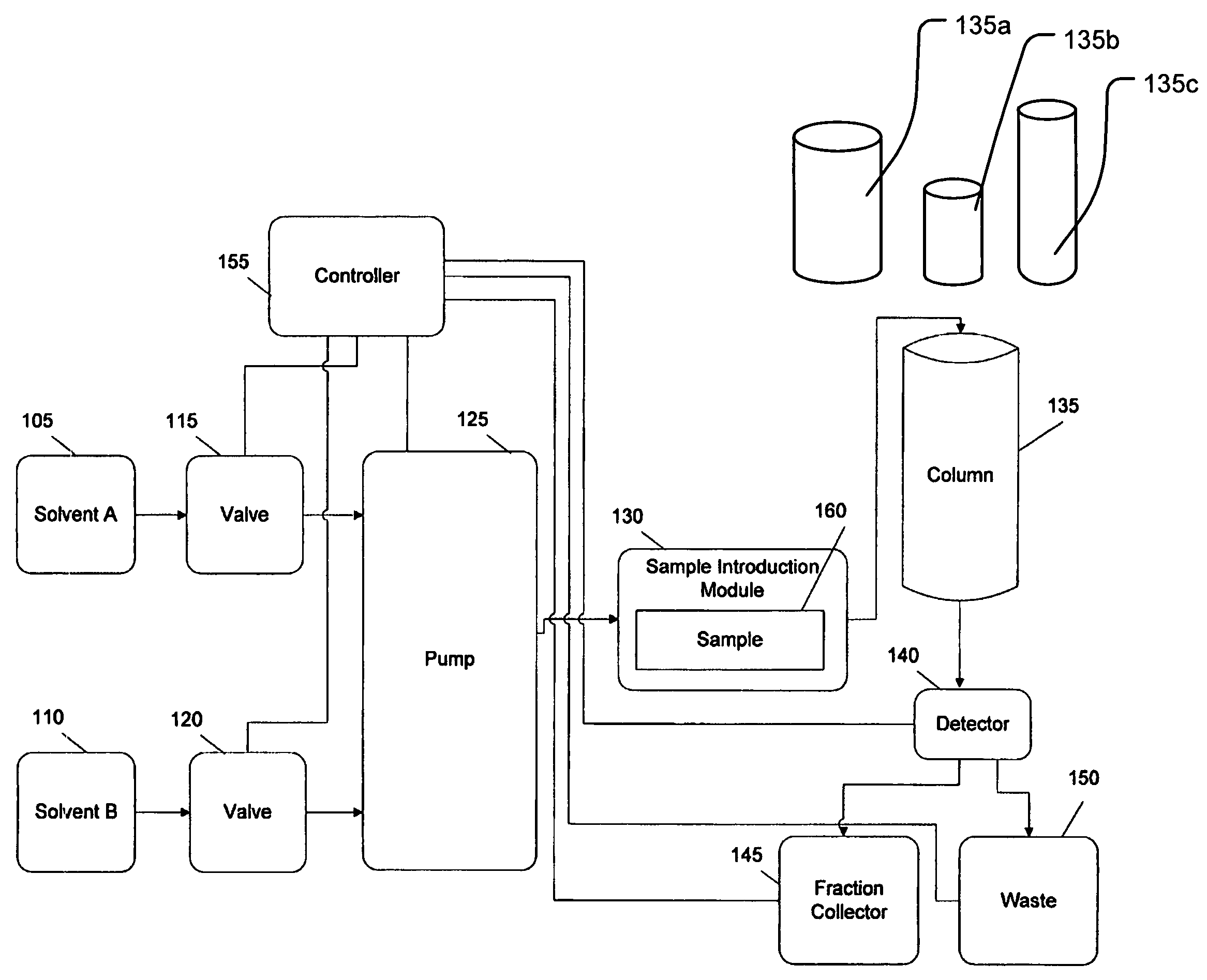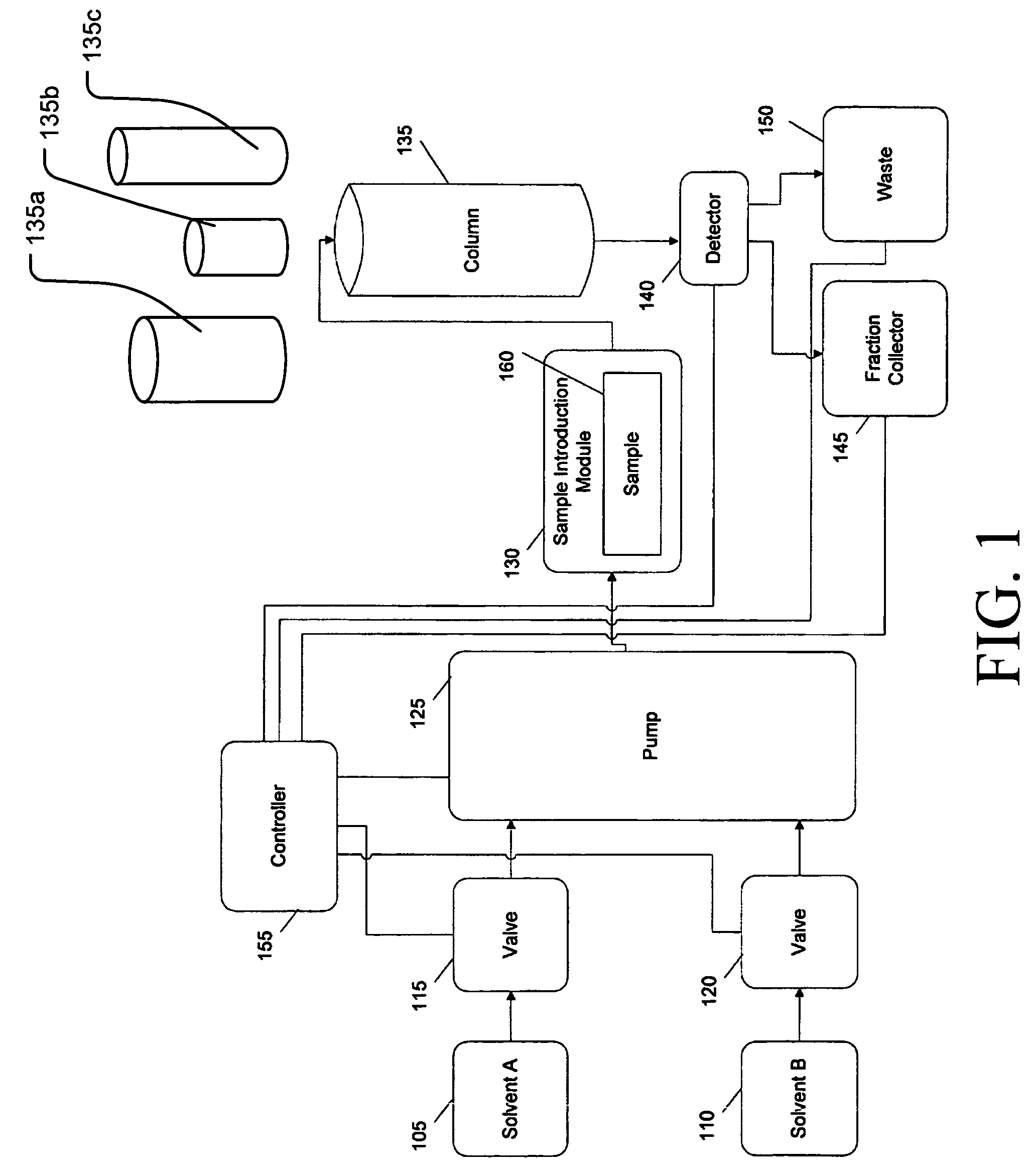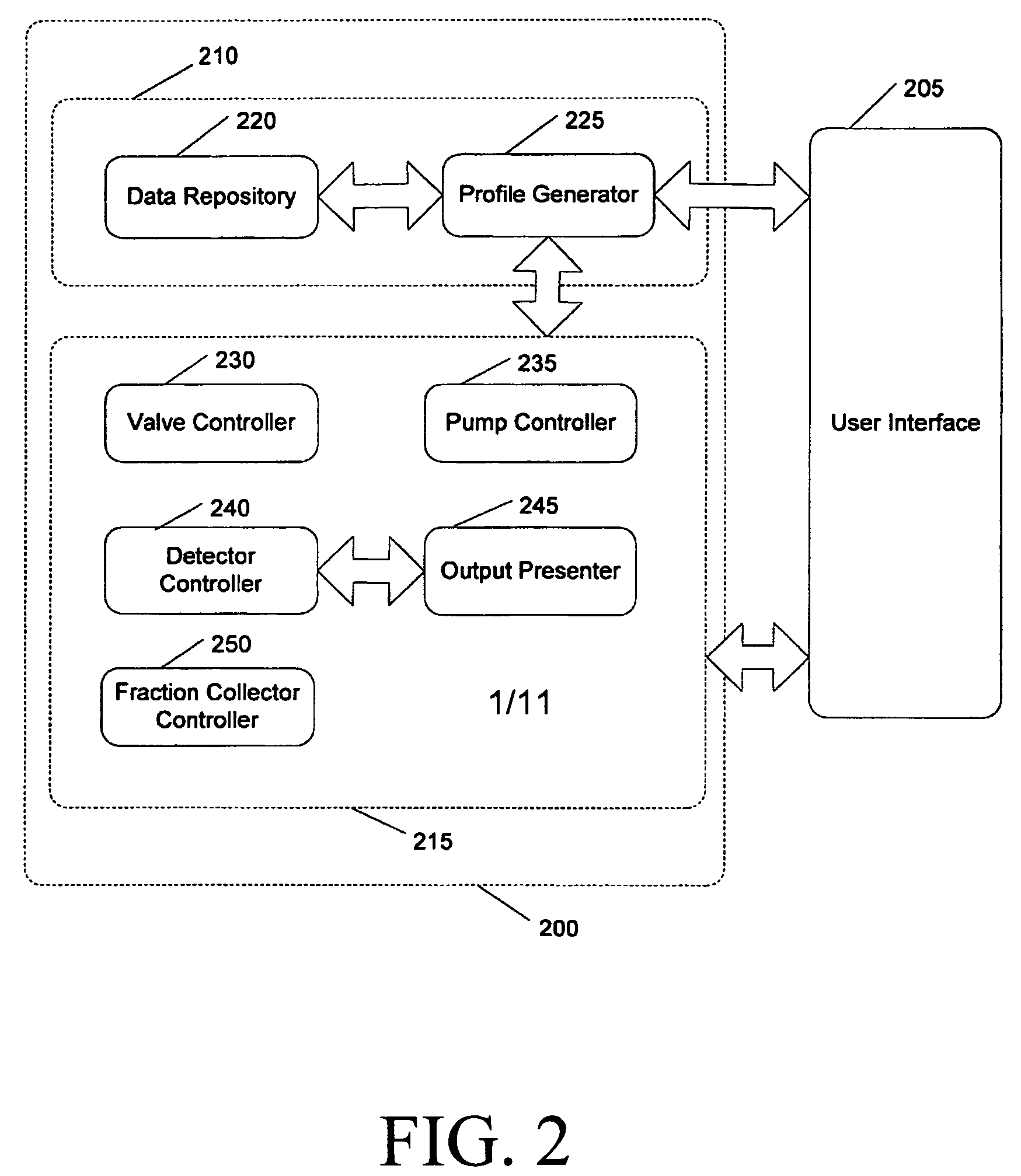Control system and method for flash separation
a control system and chromatographic technology, applied in the field of chromatography, can solve the problems that separation conditions that produce acceptable results for one chromatographic method may not, and cannot, produce acceptable results, and achieve the effect of improving separation and increasing the efficiency of the chromatographic system
- Summary
- Abstract
- Description
- Claims
- Application Information
AI Technical Summary
Benefits of technology
Problems solved by technology
Method used
Image
Examples
Embodiment Construction
[0030]FIG. 1 is a block diagram of a column chromatography system according to an example embodiment of the invention. As illustrated in FIG. 1, the chromatography system includes solvent sources 105 and 110, valves 115 and 120, a pump 125, a sample introduction module (SIM) 130, a column 135 (which may be selected from a group of available columns 135a, 135b, 135c), a detector 140, a fraction collector vessel 145, a waste collector vessel 150, and a controller 155. Chromatography is performed in the system of FIG. 1 by preparing the chromatography system for use and providing the necessary inputs to the controller 155. Preparing the system for use may include, for example, loading a first solvent A and a second solvent B in the solvent sources 105 and 110, respectively, and loading a sample 160 into the SIM 130.
[0031]Inputs provided to the controller 155 may include, for example, commands corresponding to specific tasks be performed, for example, a command requesting the pump 125 t...
PUM
| Property | Measurement | Unit |
|---|---|---|
| distance | aaaaa | aaaaa |
| distance | aaaaa | aaaaa |
| retention factors | aaaaa | aaaaa |
Abstract
Description
Claims
Application Information
 Login to View More
Login to View More - R&D
- Intellectual Property
- Life Sciences
- Materials
- Tech Scout
- Unparalleled Data Quality
- Higher Quality Content
- 60% Fewer Hallucinations
Browse by: Latest US Patents, China's latest patents, Technical Efficacy Thesaurus, Application Domain, Technology Topic, Popular Technical Reports.
© 2025 PatSnap. All rights reserved.Legal|Privacy policy|Modern Slavery Act Transparency Statement|Sitemap|About US| Contact US: help@patsnap.com



